Best Plants in PON Substrate
Commonly utilized in semi-hydroponic systems, PON is a unique medium designed to support plant health by regulating moisture and providing a stable base for roots.
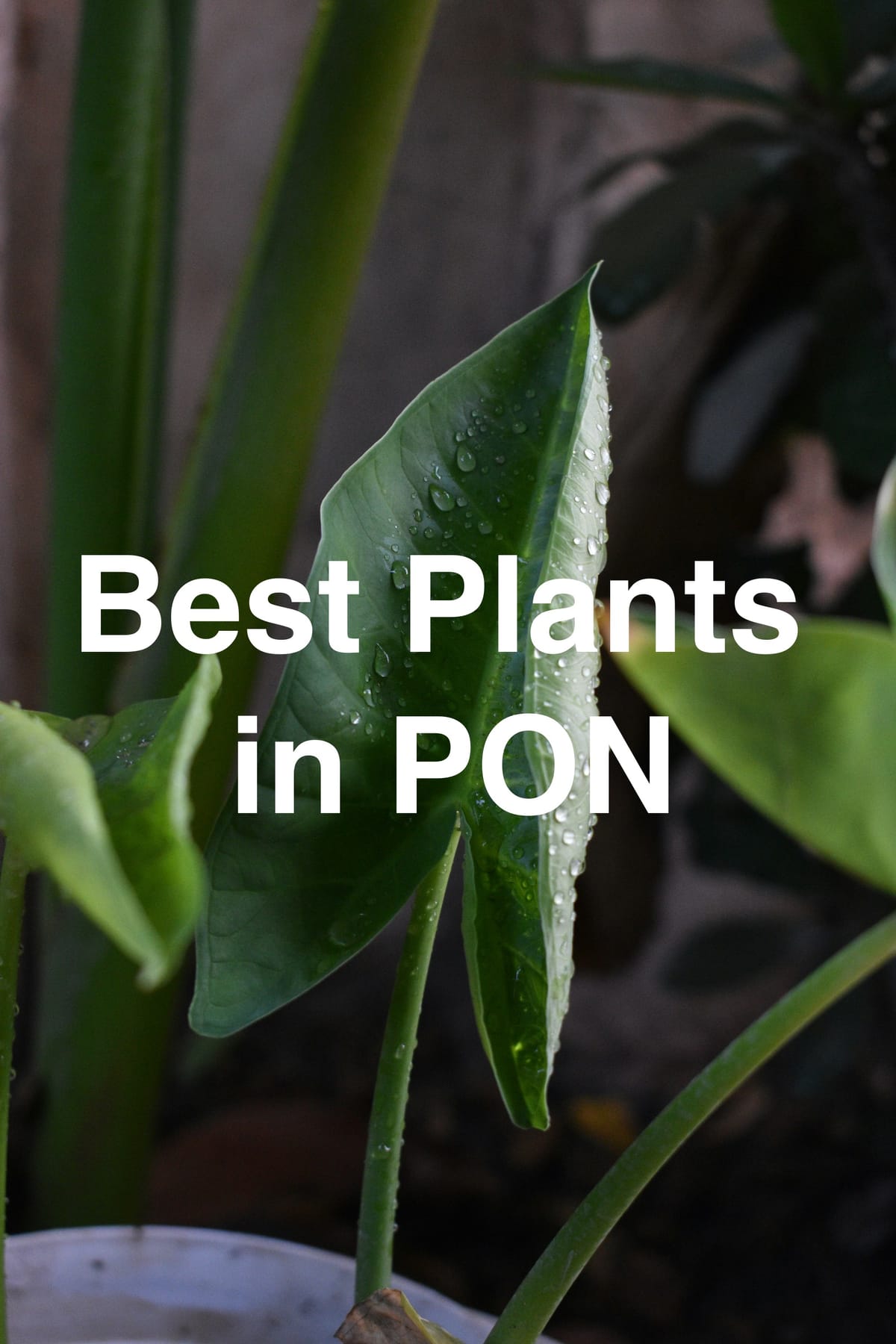
Indoor gardening has expanded with the use of substrates like PON, an inorganic planting material that is gaining popularity for its ability to provide better drainage and aeration compared to traditional potting soils.
For enthusiasts looking to maintain healthy indoor plants, PON provides a sterile, nutrient-free environment. It requires less frequent watering and minimizes the risks of soil-borne pests and diseases.
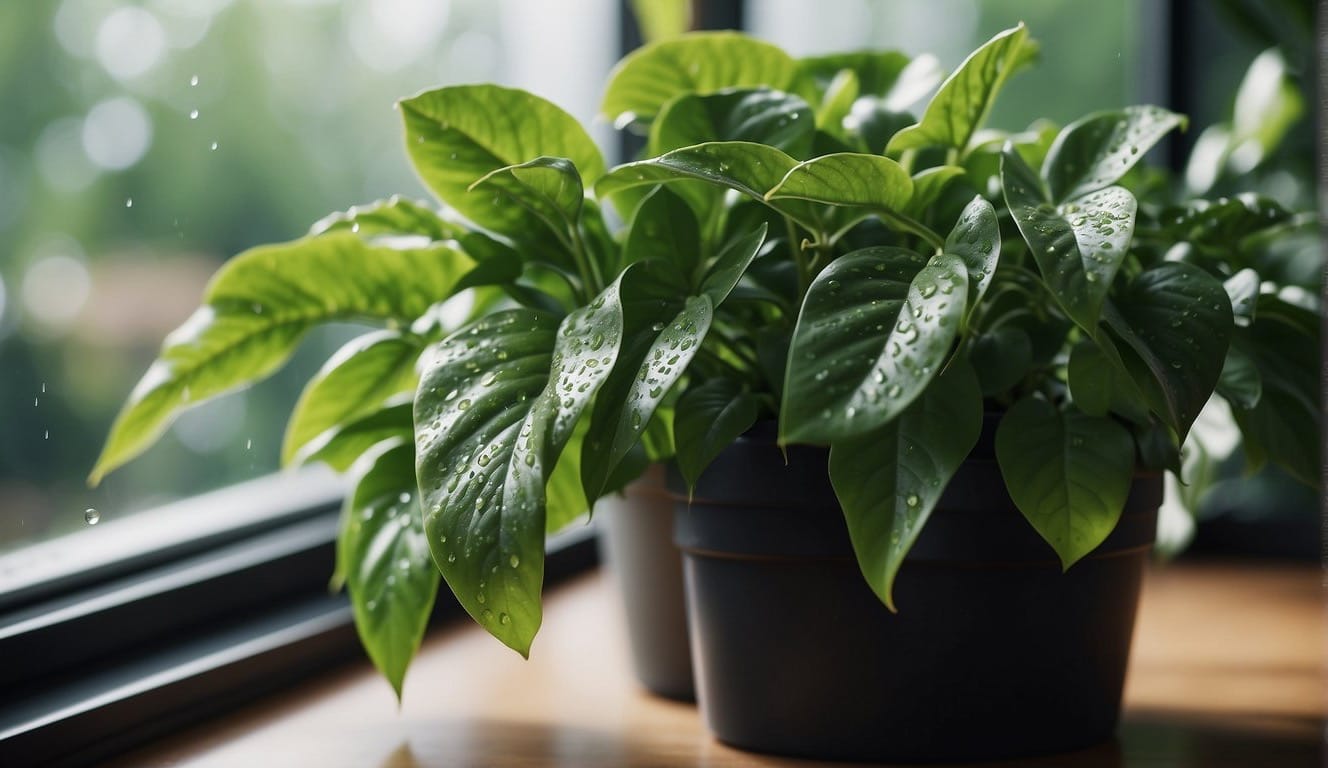
Choosing the right plants for PON substrate is crucial, as it behaves differently than soil, and not every indoor plant thrives in it.
Fortunately, various plants, such as those with a preference for well-drained conditions, excel in PON.
For instance, the Monstera, known for its large leaves and easy-care nature, is an excellent candidate for PON growth due to its intolerance of waterlogged roots.
The transition to PON from soil and the necessary care thereafter, including watering strategies and nutrient supplementation, are also key considerations for a successful indoor garden.
Key Takeaways
- PON substrate promotes superior drainage and aeration for indoor plants.
- Selecting appropriate plants for PON is essential, with species like Monstera being ideal choices.
- Understanding PON-specific care, such as watering and fertilization, ensures plant health and longevity.
Understanding PON Substrate
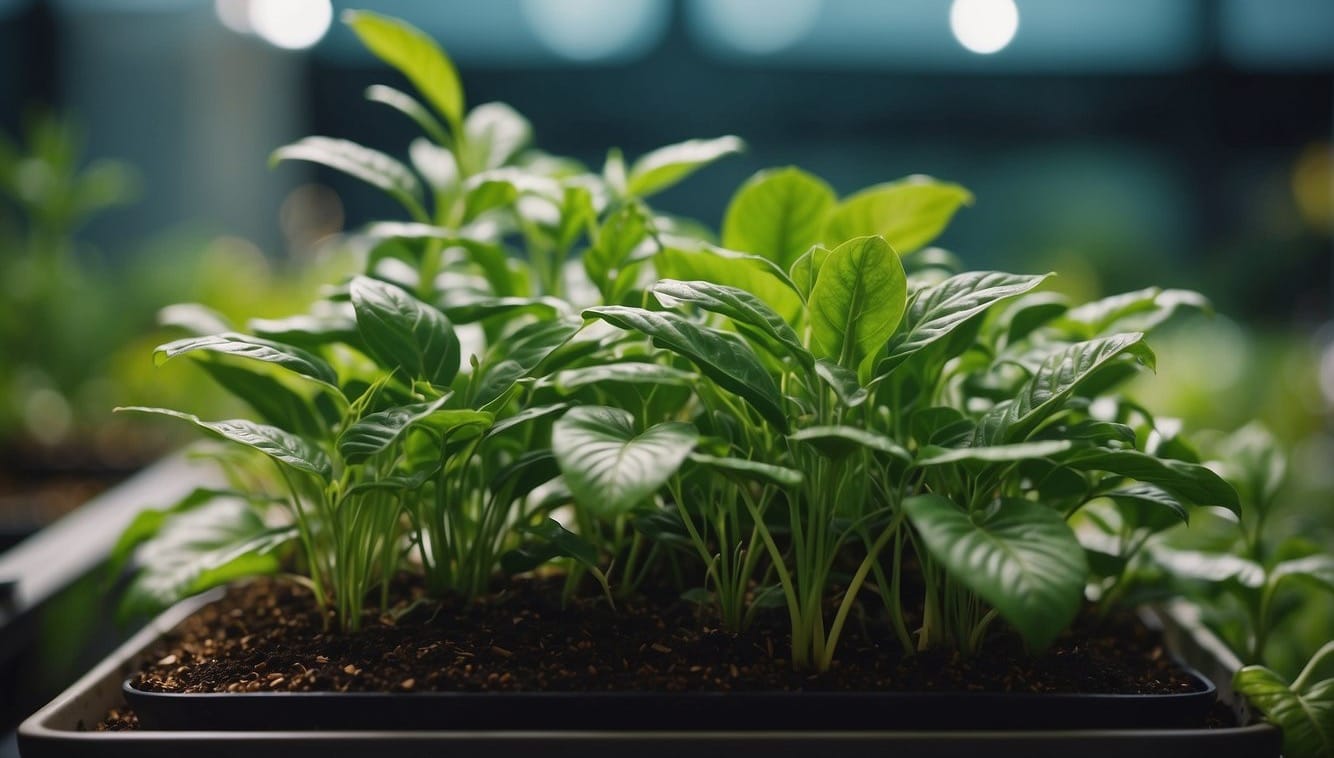
PON substrate is a specialized medium designed to offer an optimal balance of air and water to plant roots. It's widely used for indoor gardening due to its unique composition and benefits.
Components
PON substrate primarily consists of inorganic materials including:
- Pumice: A light, porous volcanic rock that allows for excellent drainage and aeration.
- Lava Rock: Similar to pumice, lava rock provides structural support and is known for its porous nature.
- Zeolite: A mineral that helps in retaining nutrients and releasing them slowly to plant roots.
These components work together to create a stable and porous environment suitable for root growth.
Unlike organic substrates, they do not break down over time, which means they can be reused.
Benefits
The advantages of using PON substrate for your indoor plants include:
- Enhanced Drainage: PON's porous nature prevents waterlogging, crucial for preventing root rot.
- Better Aeration: The gaps between the inorganic particles allow roots to access the oxygen they need.
- Consistent Moisture: While the substrate allows excess water to drain, materials like zeolite ensure moisture is retained at the root level.
- Longevity: As an inorganic medium, PON does not decompose, making it a durable choice for long-term plant growth.
Preparation
Before using PON straight out of the bag, it's important to take a few preparatory steps:
- Rinse the PON: Wash the substrate to remove any residual dust which might clog the root system.
- Layering:
- Place a layer of PON at the bottom of your pot.
- Position the root ball on top of this layer.
- Fill in around the roots with more PON, ensuring even distribution.
With PON substrate, you can create an environment for your indoor plants that mimics natural soil conditions, contributing to healthier and more robust plant growth.
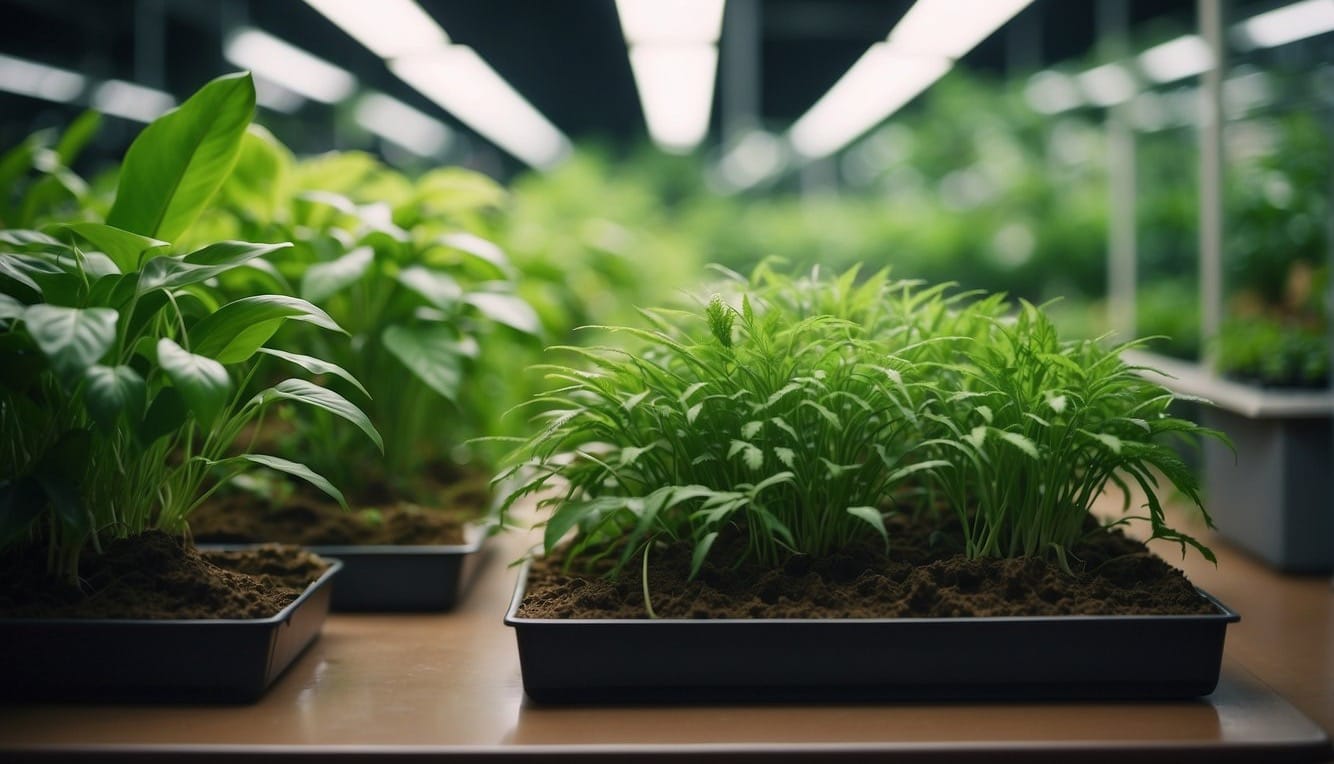
Best Plants for PON Substrate
PON substrate offers a well-draining, nutrient-rich environment ideal for aroids and other houseplants. Understanding the right plants for this medium will ensure thriving indoor greenery.
Anthuriums

Your Anthuriums will appreciate PON substrate's exceptional aeration and moisture retention. These tropical plants enjoy a loose, fertile medium, allowing their roots to receive ample oxygen, fostering lustrous leaves and vivid blooms.
Philodendrons
PON substrate is a boon for Philodendrons due to its ability to mimic the natural, airy soil of their rainforest habitat. It provides the perfect balance of drainage and water retention, aiding in robust root development.
Monsteras
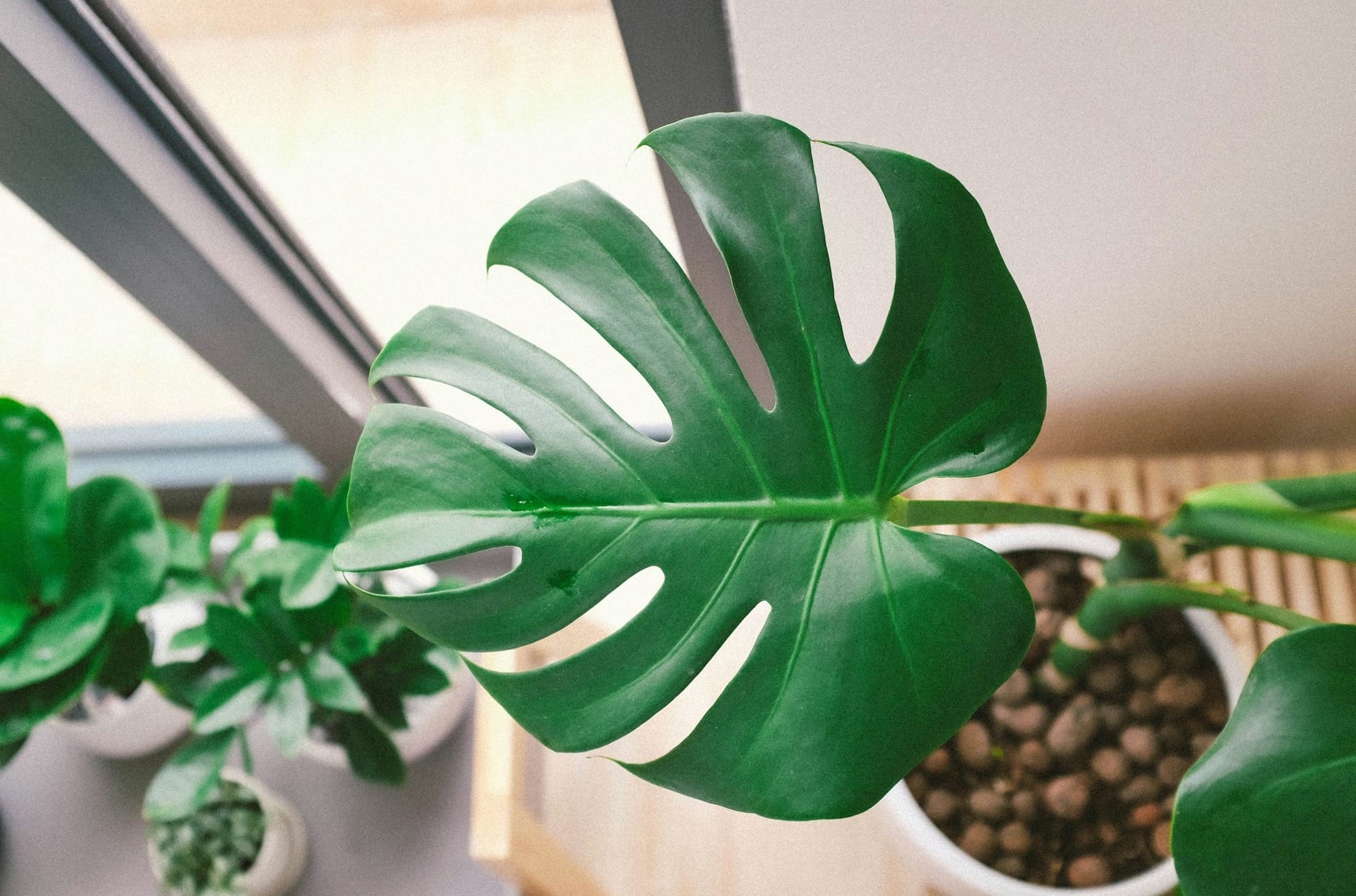
As natural climbers, Monsteras love the stability and support that PON substrate provides. It's conducive to their growth habit, encouraging strong aerial roots while maintaining the necessary moisture without waterlogging.
Succulents
Your Succulents will thrive in PON substrate because it prevents root rot through excellent drainage. This is vital for plants that are prone to overwatering and need dry conditions to proliferate.
Alocasias
PON substrate caters to the demanding roots of Alocasias by providing a stable yet airy growth environment. It complements their need for consistently moist, but not waterlogged, conditions to maintain vibrant foliage.
Hoyas
Hoyas, with their succulent-like qualities, favor PON substrate's dry phase, which mimics the drought conditions they sometimes face in their natural habitats. The substrate enables aeration critical for their delicate root systems.
Watering Strategies for PON
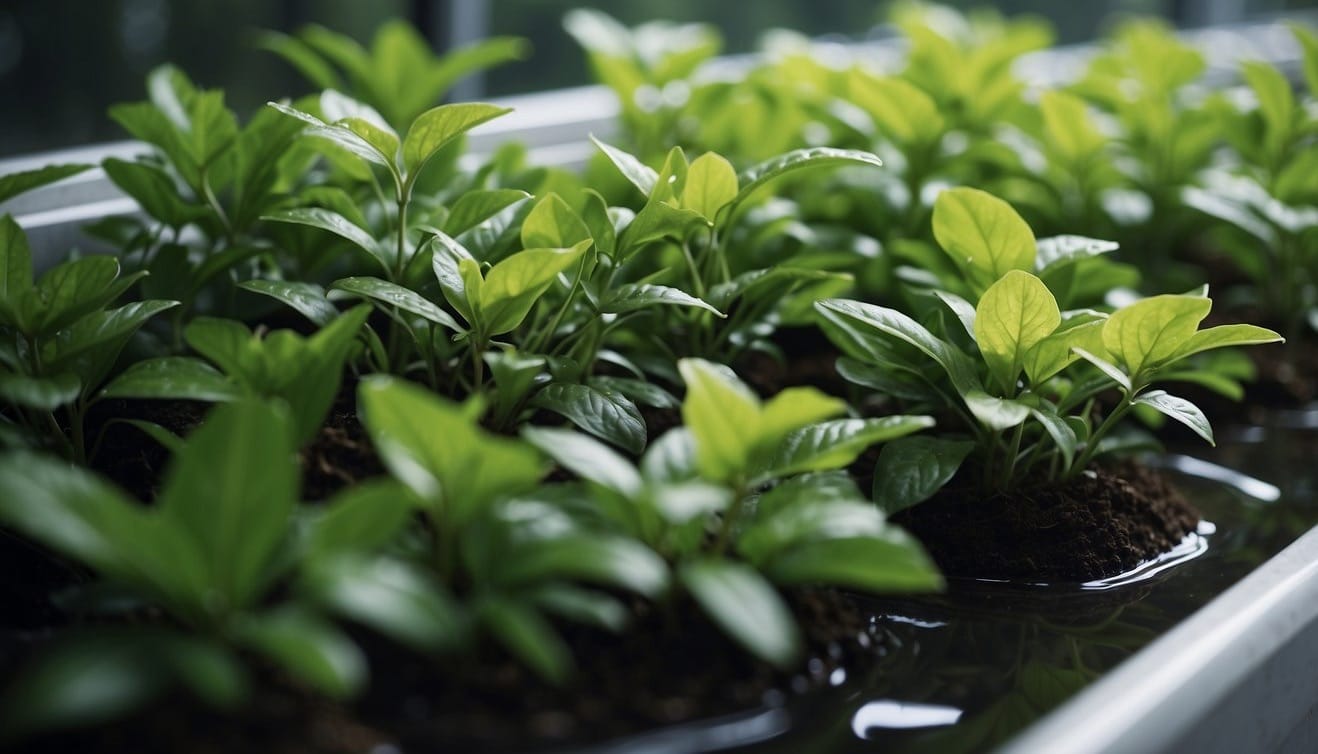
PON substrate presents unique watering methods compared to traditional potting mixes. These strategies allow for effective moisture management and plant health.
Reservoir Method
The Reservoir Method utilizes a built-in water reservoir at the bottom of your self-watering pot. This system provides a consistent moisture source. To implement:
- Fill: Add water to the reservoir until it reaches the indicated maximum level.
- Allow Plant Uptake: Your plants will absorb water through their roots as needed, maintaining an evenly moist environment within the PON.
Wick System
The Wick System works through capillary action, using a wick to transport water from a reservoir to the PON substrate.
- Set Up: Connect a wick from the water reservoir to the PON.
- Consistent Moisture: As the PON dries, the wick supplies moisture, ensuring your plant roots are never completely dry.
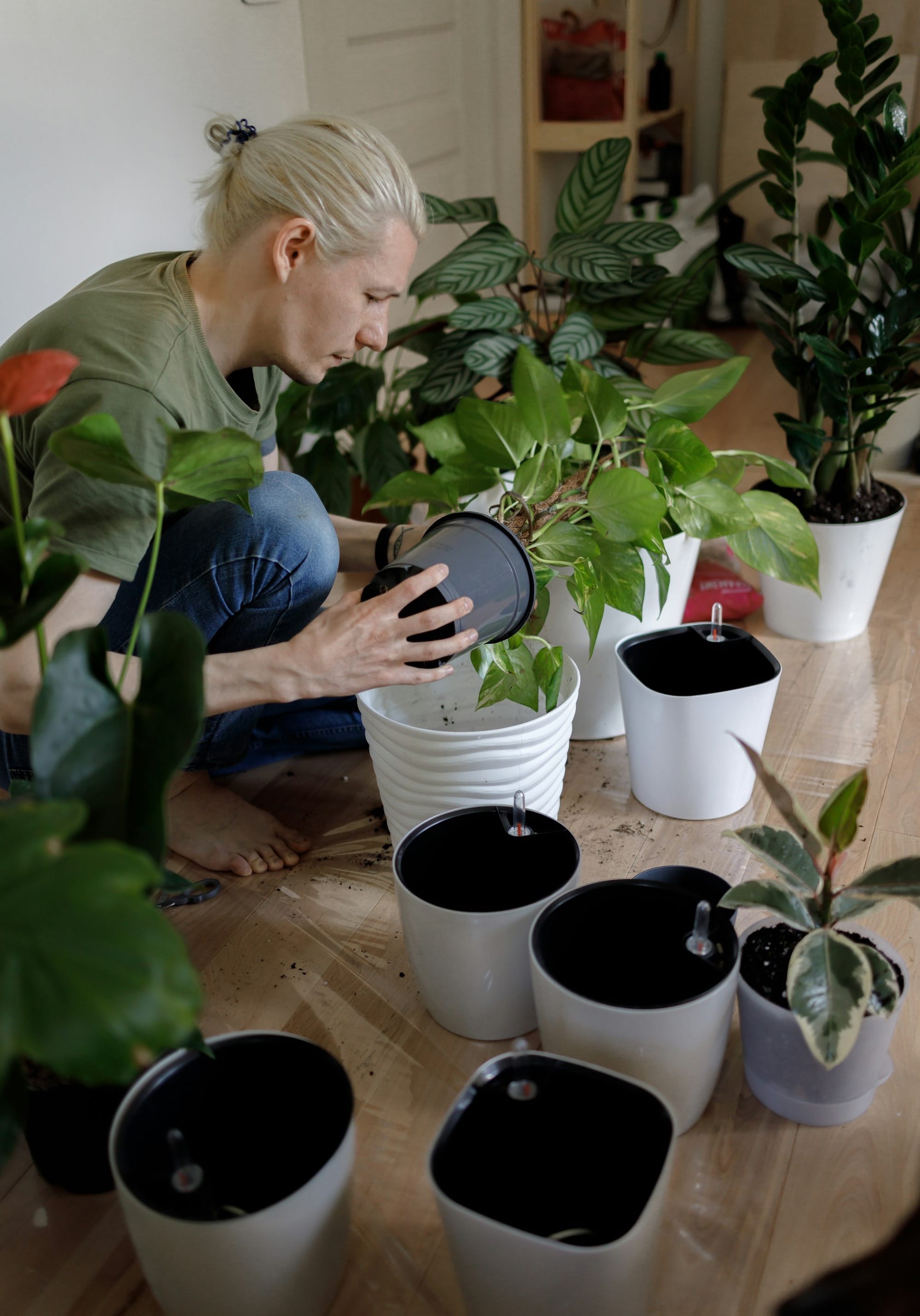
Dry Phase Management
Managing the Dry Phase is crucial to prevent root rot and overwatering in PON.
- Observe: Monitor the moisture of the PON, checking for the top layer to become dry.
- Watering: When the top of the PON is dry, add water until it drains out of the drainage holes, signifying the PON is evenly moist but not waterlogged.
Nutrients and Fertilization
When growing indoor plants in PON substrate, understanding the fertilization process is crucial. You need to provide your plants with the proper balance of nutrients and employ the right fertilizers to ensure their growth and vitality.
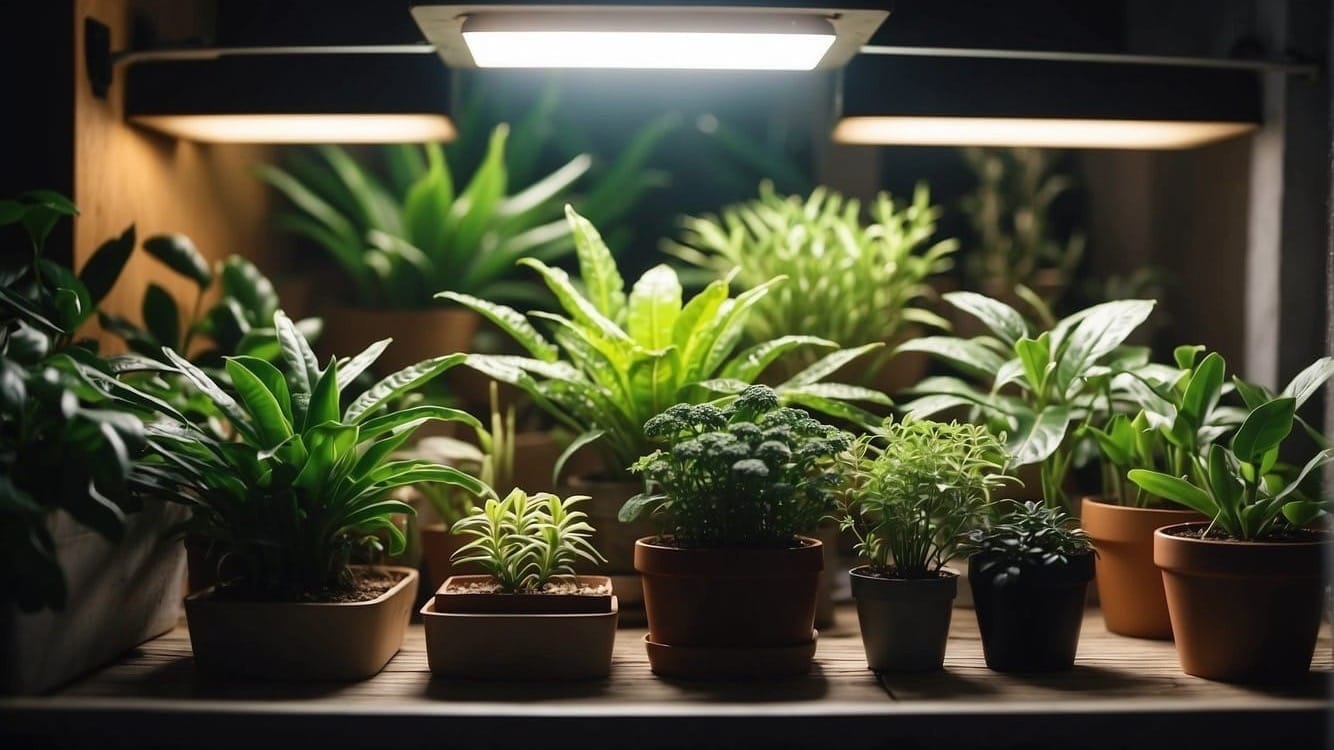
NPK Ratios
The NPK ratio in fertilizers refers to the balance of nitrogen (N), phosphorus (P), and potassium (K), three primary nutrients required by plants. For most houseplants in Pon:
- Nitrogen (N) is essential for leaf growth and green coloration.
- Phosphorus (P) aids in root development and the growth of flowers and fruits.
- Potassium (K) helps overall functions of the plant to proceed, including water uptake and synthesis of plant sugars.
Ensure the fertilizer you choose has an appropriate NPK ratio for the specific type of plant you are growing.
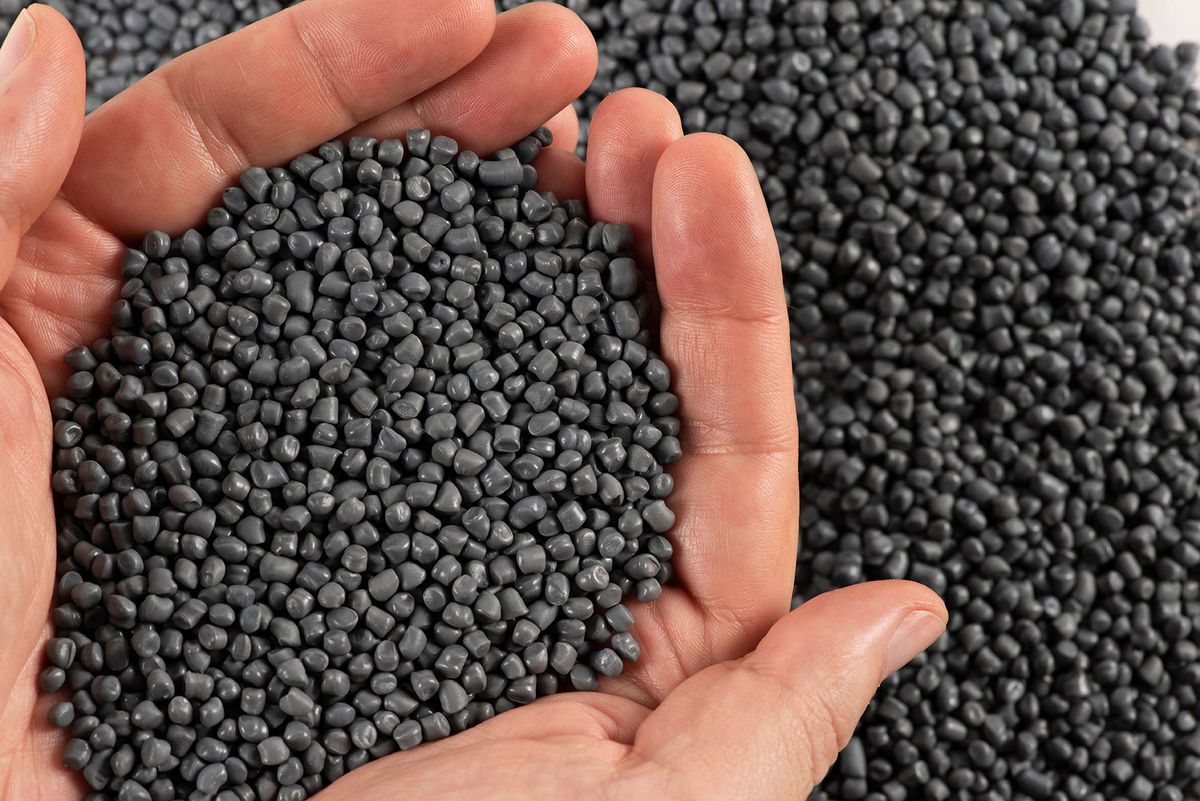
Slow-Release Fertilizers
Slow-release fertilizers are an ideal choice for Pon-based indoor plants. These fertilizers:
- Gradually release nutrients over time, minimizing the risk of over-fertilization.
- Require fewer applications, making them user-friendly and time-effective.
Choose a slow-release fertilizer that provides a continuous supply of nutrients tailored to the needs of your plants. This will help maintain an optimal pH balance and availability of organic matter.
Micro-Nutrient Addition
While NPK is critical, plants also need micro-nutrients such as calcium, magnesium, iron, and zinc in smaller quantities. These are sometimes present in Pon or can be added through specific fertilizers. To ensure your plants don't suffer from a lack of these essential micro-nutrients:
- Consider incorporating a fertilizer that includes micro-nutrients, especially if you're creating a DIY mix.
- Look for signs of deficiencies like yellowing leaves or stunted growth, which could indicate a micro-nutrient imbalance.
Preventing and Treating Pests and Diseases

When cultivating indoor plants in PON substrate, it's crucial to be vigilant about pests and plant diseases. An effective strategy is essential to both prevent infestations and treat them promptly if they occur.
Fungus Gnats
Identification: Fungus gnats are small, dark, fly-like insects commonly seen around indoor plants grown in PON substrate.
- Symptoms: If you notice adult gnats flying around the plant or larvae in the substrate, take action.
- Treatment:
Employ yellow sticky traps to catch adults and water with a diluted hydrogen peroxide solution (1 part 3% hydrogen peroxide to 4 parts water) to kill larvae in the substrate.
Root Rot
Identification: Root rot, a disease typically caused by overwatering, can also affect plants in PON substrates.
- Symptoms: Check for soft, brown roots and a foul smell from the substrate indicating possible root rot.
- Treatment:
- Remove the plant from its pot and trim away the affected roots.
- Repot in fresh PON substrate ensuring proper drainage.
- Adjust your watering routine to prevent recurrence.
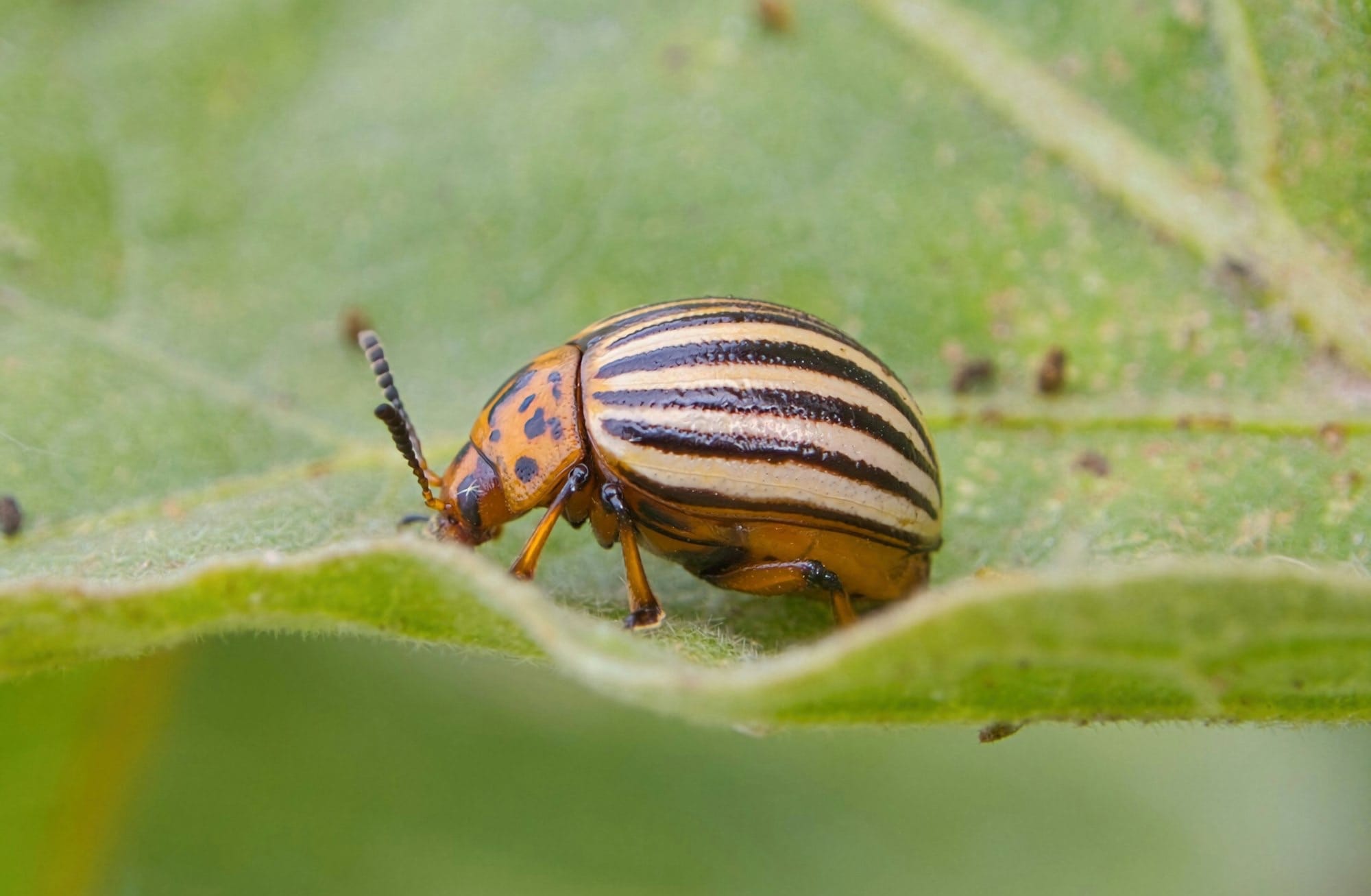
Preventative Measures
Routine Checks: Regularly inspect your plants and PON substrate for early signs of trouble.
- Isolation: Quarantine new plants for at least two weeks to monitor for pests or diseases.
- Practices:
- Water Appropriately:
Overwatering can escalate pest and disease problems — water only when the top inch of the PON substrate feels dry.
Always sterilize your pruning shears with isopropyl alcohol before and after use to prevent spreading pathogens.
Propagation in PON
PON substrate provides an ideal environment for various propagation methods, supporting robust root development and facilitating a soil-free start for your new plants.
Cuttings
To propagate your plants from cuttings using PON, you'll first need to prepare your cutting by removing any lower leaves and dipping the cut end into a CCS rooting formula. This helps enhance root growth.
After treatment, insert the cutting into moist PON ensuring that the cut end is well coated with the substrate. The superior aeration and moisture retention of PON will encourage quick root development.
Division
When dividing a plant, gently separate the individual sections while taking care not to damage the roots.
Plant each division directly into PON, spacing them adequately to give room for root expansion. Due to PON's structure, the roots will establish themselves more quickly without the compaction associated with traditional soil, leading to healthier growth.

Seed Starting
Start your seeds in PON by first saturating the substrate with water, allowing it to drain appropriately so that it’s moist but not waterlogged.
Plant seeds according to their size and cover lightly with PON, providing a stable and nurturing medium for seeds to germinate.
The consistent moisture and the nutrient-storing properties of PON create an optimal environment for seedlings to establish strong root systems.
Transitioning to PON
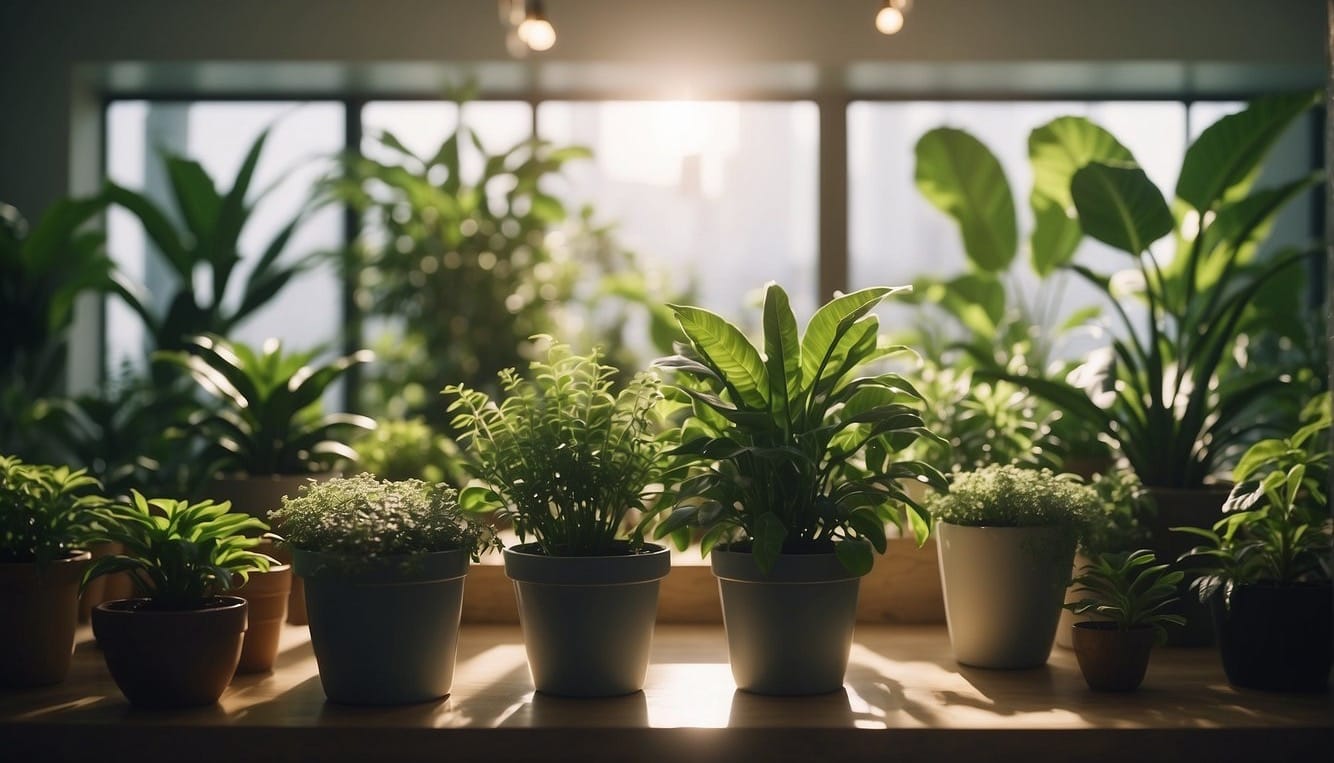
When you decide to switch your indoor plants from traditional soil to PON substrate, the key to successful transition lies in proper preparation of the roots and allowing the plants to acclimatize to their new growing medium.
From Soil to PON
- Remove plant from the soil: Be gentle to avoid root damage.
- Clean the roots: Rinse thoroughly to ensure PON can make contact with roots.
- Trim the roots: Cut away any dead or overgrown roots to support new growth.
Acclimatization Process
Once you've prepared the plant, it's time for the acclimatization process.
Start by adding a layer of PON to the bottom of the pot, enough to cover about a quarter of the pot's depth. Place the root ball on top of this layer.
Next, fill the remainder of the pot with PON, ensuring that the roots are completely covered and the substrate is evenly distributed.
- Initial Watering: Water the plant thoroughly to settle the medium around the roots.
- Dry Phase: Allow for a dry phase between watering sessions, usually ranging from 2 to 10 days depending on your specific plant and environmental conditions.
PON Maintenance and Care
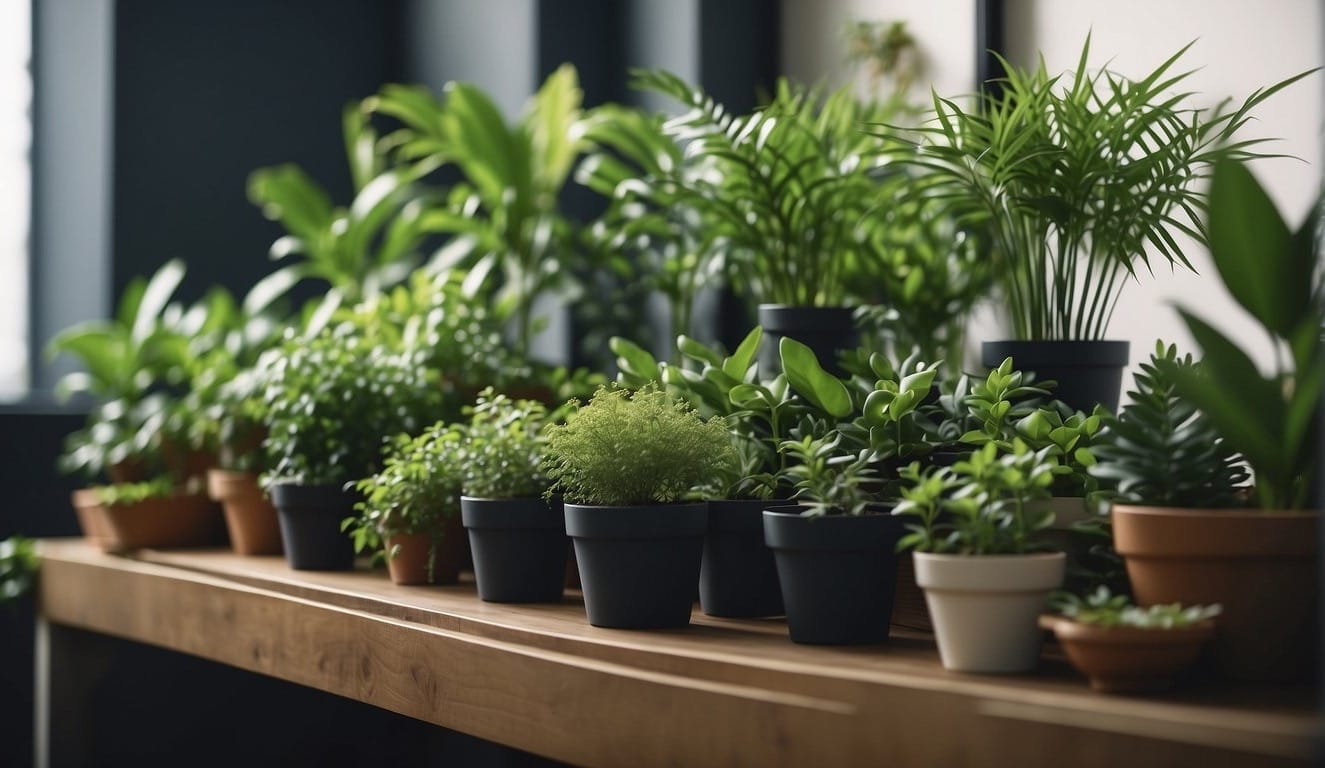
Proper maintenance of PON as a growing medium is crucial to ensure your plants are healthy and thriving. This involves systematic cleaning, nutrient management, and ensuring optimal aeration for root health.
Cleaning and Flushing
- Perform Flushing: Every 4 to 6 months, run water through the PON, allowing it to drain completely. This removes excess nutrients and prevents toxic accumulations.
- Check for Drainage: Make sure your pots have adequate drainage holes to avert root rot or fungal growth.
Replenishing Nutrients
PON does not contain nutrients found in soil; therefore, you need to:
- Use Liquid Fertilizer: Add a balanced, liquid fertilizer to your watering schedule—typically every 2 to 4 weeks, based on the plant's needs and the manufacturer's recommendations.
- Monitor Plant Signs: Watch for signs of nutrient deficiency such as yellowing leaves or stunted growth, and adjust fertilization accordingly.
Aeration and Root Health
Healthy roots are essential for plant vitality. For proper aeration and root health in PON:
- Prevent Compaction: Loosen PON gently during flushing to maintain airflow and promote healthy root systems, which prevents anaerobic conditions that can harm your plants.
- Observe Roots Regularly: When you clean or repot, inspect roots for signs of disease or over-watering, such as a mushy texture or discoloration, and take action as required.
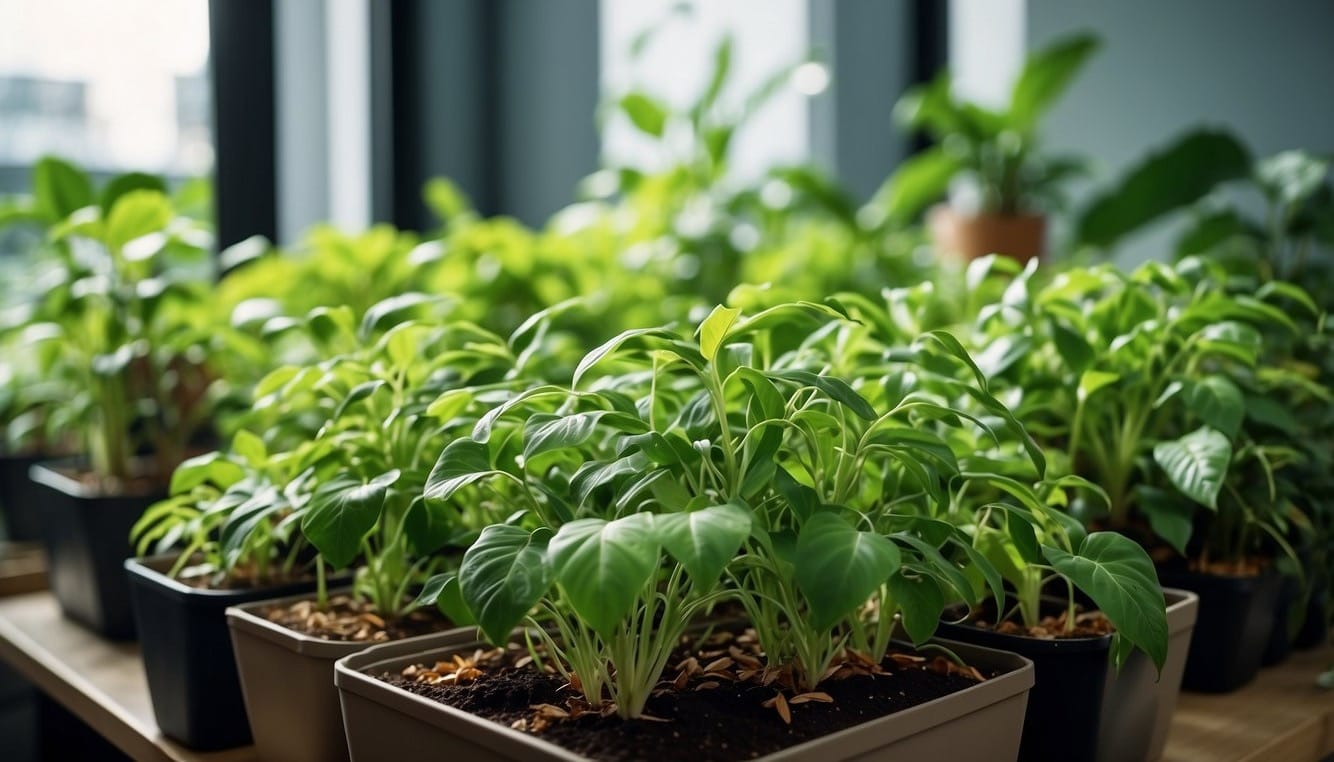
Frequently Asked Questions
Navigating the specifics of using PON substrate for your indoor plants can drive better growth and less maintenance. Here are answers to common questions about this unique growing medium.
Which small indoor plants perform best in PON substrate?
Your small indoor plants like succulents, cacti, and herbs often thrive in PON substrate due to its well-balanced moisture distribution and aeration properties.
How should one water houseplants grown in PON substrate?
Water your houseplants in PON substrate only when the top layer feels dry. The substrate is designed to retain moisture at the bottom, so less frequent watering is required compared to traditional soil.
Are there any suitable alternatives to Lechuza Pon for houseplants?
If you're exploring alternatives, look for similarly structured substrates that include ingredients like pumice, zeolite, and lava rock. These can simulate the properties of Lechuza Pon and support healthy plant growth.
What are some key benefits of using PON substrate for indoor plants?
Using PON substrate can lead to healthier root systems and fewer instances of over-watering. It also typically includes slow-release fertilizer, reducing the need for supplemental feeding.
Can anthuriums be successfully grown in PON substrate?
Yes, anthuriums can flourish in PON substrate because it mimics the loose, well-drained environment they prefer, similar to their natural tropical habitat.
Is PON substrate a good choice for cultivating begonias indoors?
Begonias need well-draining soil to prevent rot. They tend to do well in PON substrate because of its porous nature and ability to prevent water logging.



